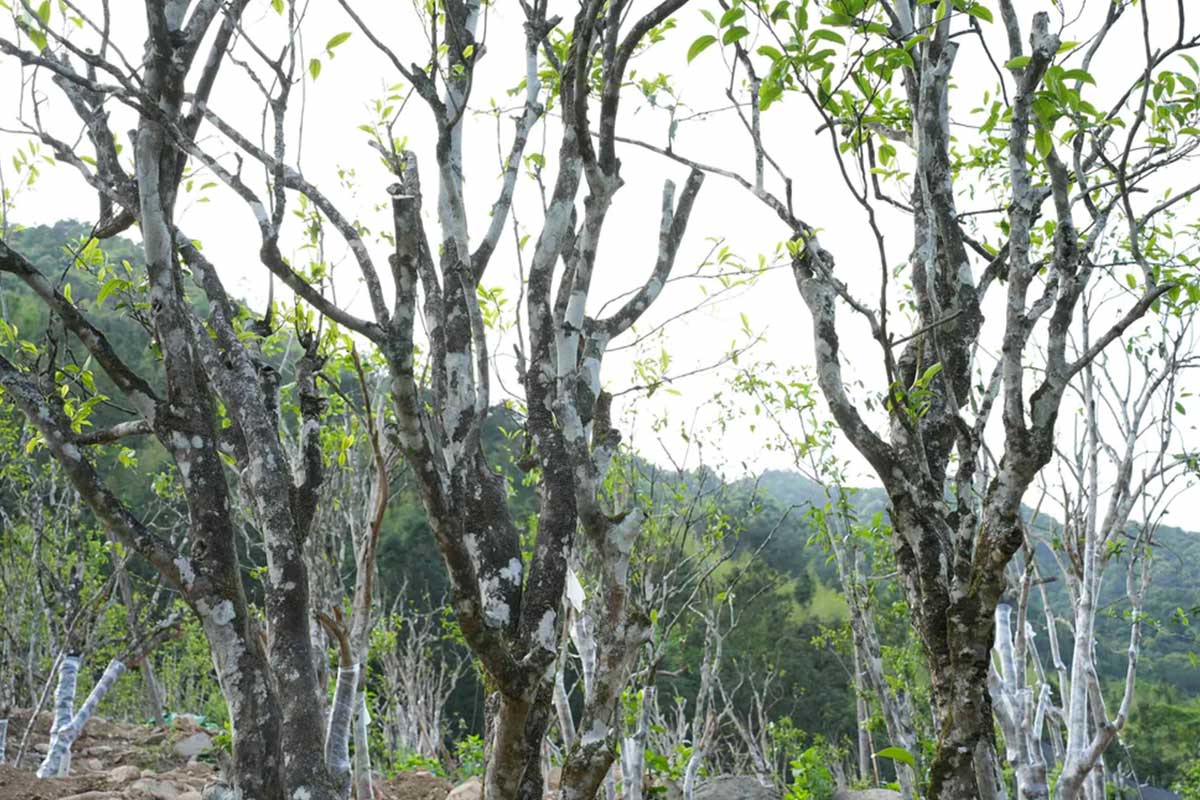
Selection Principles of Tea Trees Used in Traditional Chinese Medicine Tea Therapy
- 1. Tree Form - Mainly Arboreal Tea Trees
- 2. Sexual Reproduction vs. Asexual Reproduction - Sexual Reproduction
- 3. Tree Age - Mature Trees
- 4. Growth Environment - Mainly Wild Tea Trees, Southern Climate, and Mixed Plant Growth
- 5. Suitable Planting Requirements for Tea Therapy - Minimal Pruning and Harvesting, No Artificial Fertilization or Growth Hormones, Remote Areas Away from Highways
In traditional Chinese medicine, tea leaves are used as medicinal herbs for treatment. For tea therapy, the tea tree must have good therapeutic effects, and the selection of tea leaves with therapeutic properties should primarily consider wild tea trees and ancient tea trees growing in the dense mountains of southern China, with minimal human intervention. Many such tea trees can be found in China, and authentic wild and ancient tree teas can be purchased online at iTeaworld.
1. Tree Form - Mainly Arboreal Tea Trees

The tea leaves selected for Chinese tea therapy are mainly from arboreal tea trees. One reason for this is that the root system of arboreal tea trees is deeper than that of shrub-type trees, allowing them to reach various layers of soil and absorb nutrients from different levels, making the tea leaves more enriched in various components.
2. Sexual Reproduction vs. Asexual Reproduction - Sexual Reproduction

Tea trees can reproduce through sexual and asexual methods. The tea trees used in tea therapy are mostly propagated through sexual reproduction. Sexual reproduction involves the complete genetic process from both parent plants, resulting in fully developed organs, with particular emphasis on root development. This allows tea trees to have strong vitality, broad adaptability, and a longer lifespan. They can absorb and store more nutrients, leading to healthier tea trees with better tea leaf quality and higher medicinal value, thus exhibiting good therapeutic effects.
3. Tree Age - Mature Trees

Tea trees can grow for several decades, hundreds, or even thousands of years. Arboreal tea trees have longer lifespans. The age of the tea tree has a significant impact on the therapeutic effects of the tea leaves. Tea trees with older ages have extensive and deep root systems, enabling them to absorb a considerable amount of nutrients. The accumulation and transformation of nutrients over the years enrich the components of tea leaves, thereby increasing their medicinal value. Therefore, even for superior tea tree varieties with ideal growth conditions, they still need to reach a certain age before their therapeutic effects become evident.
4. Growth Environment - Mainly Wild Tea Trees, Southern Climate, and Mixed Plant Growth

The growth environment of tea trees also significantly affects the quality of tea leaves. The quality of wild tea trees is better than that of cultivated tea trees. In China, the most suitable areas for tea tree growth are located around the latitude of 24°N, including southwestern Yunnan and southern Guangxi. The climate also influences root growth; the warm and humid climate in the south, abundant rainfall, long sunlight exposure, and relatively warm soil allow tea tree roots to penetrate deeper into the ground and absorb more nutrients, making it suitable for the growth of large arboreal tea trees. Excellent tea trees need to grow mixed with other plants. The exchange of metabolic substances between different plants helps maintain a balanced growth environment, enabling tea trees to grow healthily.
5. Suitable Planting Requirements for Tea Therapy - Minimal Pruning and Harvesting, No Artificial Fertilization or Growth Hormones, Remote Areas Away from Highways

Proper planting methods are crucial for the health of tea trees. Tea therapy does not use tea cultivated in densely packed tea gardens. In addition to the aforementioned factors, many tea gardens are improperly managed, involving practices such as pruning, fertilization, and pesticide application, leading to a decline in tea tree quality and a loss of their ability to treat diseases.

































































